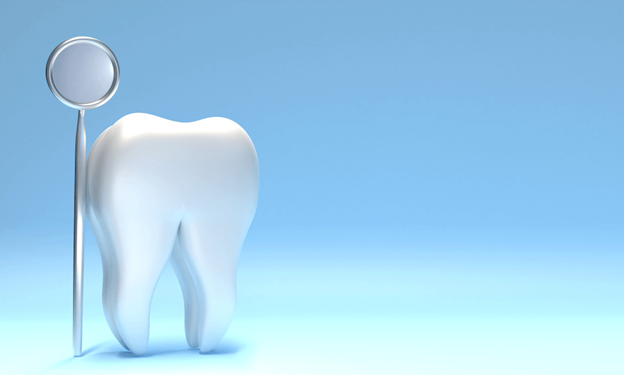Preventive dentistry has made significant strides in recent years, offering dentists innovative tools and techniques to enhance patient care. The focus on prevention is crucial, as it not only improves patient outcomes but also reduces the need for more invasive and costly treatments.
This article explores the latest advances in preventive dentistry and provides practical tips for dentists to integrate these developments into their practice.
The Importance of Preventive Dentistry
Preventive dentistry encompasses all measures taken to avoid dental diseases and maintain optimal oral health. These measures include patient education, regular dental check-ups, cleanings, and the use of protective devices such as mouthguards. The ultimate goal is to prevent conditions like dental caries, periodontal disease, and oral cancer before they require more extensive intervention.

Advances in Diagnostic Tools
One of the most significant advancements in preventive dentistry is the development of improved diagnostic tools. These tools allow for early detection of dental issues, which is essential for effective prevention.
Digital Radiography
Digital radiography has revolutionized dental imaging by providing high-quality images with reduced radiation exposure. This technology enables dentists to detect cavities, bone loss, and other issues at an early stage. The immediate availability of digital images also allows for quicker diagnosis and treatment planning.
Intraoral Cameras
Intraoral cameras are another valuable diagnostic tool that provides detailed images of the teeth and gums. These cameras help dentists identify problems such as cracks, decay, and worn fillings that may not be visible to the naked eye. By showing patients these images, dentists can also enhance patient education and involvement in their own oral health.
Caries Detection Devices
Devices like DIAGNOdent and Spectra use laser fluorescence to detect early signs of tooth decay. These non-invasive tools can identify cavities at their earliest stages, allowing for prompt intervention and preventing the progression of decay.
Innovations in Preventive Treatments
Alongside diagnostic advancements, there have been significant improvements in preventive treatments that help maintain oral health and prevent disease.
Fluoride Varnishes and Sealants
Fluoride varnishes and dental sealants have long been staples in preventive dentistry, and recent formulations have made them even more effective. Fluoride varnishes help strengthen tooth enamel, making it more resistant to decay. Dental sealants, typically applied to the chewing surfaces of molars, provide a physical barrier against food particles and bacteria. Advances in these materials have increased their longevity and efficacy.
Antimicrobial Rinses and Toothpaste
The development of antimicrobial rinses and toothpaste has provided patients with additional tools to combat oral bacteria. Products containing ingredients like chlorhexidine, cetylpyridinium chloride, and essential oils have been shown to reduce plaque and gingivitis, enhancing overall oral hygiene.
Also read: What’s the right time to Change Your Toothbrush?
Probiotic Therapies
Probiotic therapies are a newer addition to preventive dentistry, focusing on balancing the oral microbiome. By introducing beneficial bacteria, probiotics can help reduce harmful bacterial populations and prevent conditions like caries and periodontal disease. Research in this area is ongoing, but early results are promising.
Patient Education and Engagement
Effective preventive dentistry relies heavily on patient education and engagement. Educating patients about the importance of oral hygiene and the role of preventive measures is crucial for long-term success.
Personalized Oral Hygiene Plans
Creating personalized oral hygiene plans for patients can significantly improve their compliance and outcomes. These plans should be tailored to each patient’s specific needs, taking into account factors like age, dental history, and risk factors. By providing customized advice and demonstrating proper techniques, dentists can empower patients to take control of their oral health.
Motivational Interviewing
Motivational interviewing is a technique that can help dentists encourage patients to adopt healthier behaviors. This patient-centered approach involves open-ended questions, reflective listening, and goal setting to foster intrinsic motivation. By building a collaborative relationship, dentists can better support their patients in making positive changes.
Use of Technology in Education
Leveraging technology can enhance patient education efforts. Digital tools such as educational videos, interactive apps, and virtual reality experiences can make learning about oral health more engaging and accessible. Providing patients with digital resources to refer to at home can also reinforce the information discussed during appointments.
Integrating Preventive Dentistry into Practice
To fully realize the benefits of advances in preventive dentistry, it is essential for dental practices to integrate these innovations into their routine care.
Continuing Education and Training
Dentists and their teams should stay current with the latest developments in preventive dentistry through continuing education and training. Attending workshops, conferences, and online courses can help practitioners stay informed about new tools, techniques, and best practices.
Streamlining Preventive Services
Incorporating preventive services into the routine workflow of the dental practice can ensure that patients receive comprehensive care. Scheduling regular check-ups, cleanings, and preventive treatments as part of the standard appointment structure can help keep preventive care at the forefront.
Collaborative Care
Collaborative care involves working with other healthcare providers to address the overall health of the patient. For example, partnering with pediatricians, dietitians, and other specialists can provide a more holistic approach to preventive care. This interdisciplinary collaboration can help identify and address risk factors that may impact oral health.
Investing in Advanced Tools and Technologies
To provide the best preventive care, it is crucial for dental practices to invest in the latest tools and technologies. Advanced diagnostic devices, high-quality preventive treatments, and innovative patient education resources can significantly enhance the effectiveness of preventive dentistry. For dentists looking to upgrade their practice, Carrothcp offers a wide range of cutting-edge dental tools and equipment. Buy all types of advanced dental tools from Carrothcp to ensure your practice stays at the forefront of dental care.
Conclusion
Advances in preventive dentistry offer exciting opportunities to improve patient outcomes and promote long-term oral health. By embracing new diagnostic tools, innovative treatments, and effective patient education strategies, dentists can play a pivotal role in preventing dental diseases and enhancing the overall well-being of their patients. Staying informed about the latest developments and integrating these advancements into daily practice will ensure that preventive dentistry remains a cornerstone of patient care.


